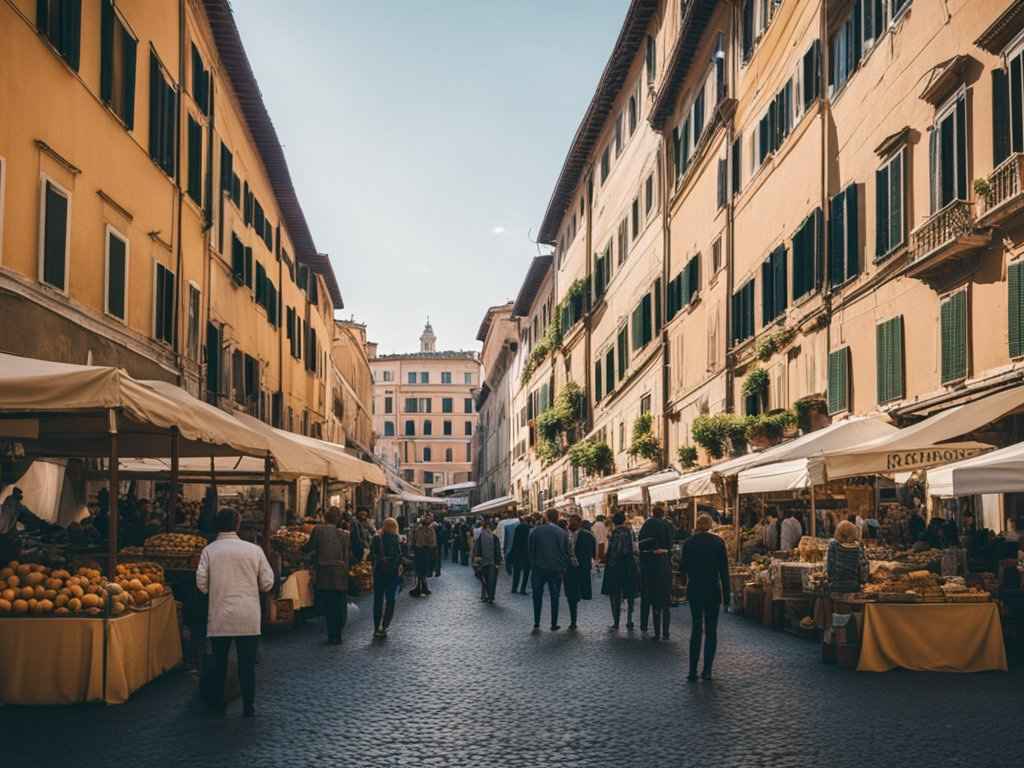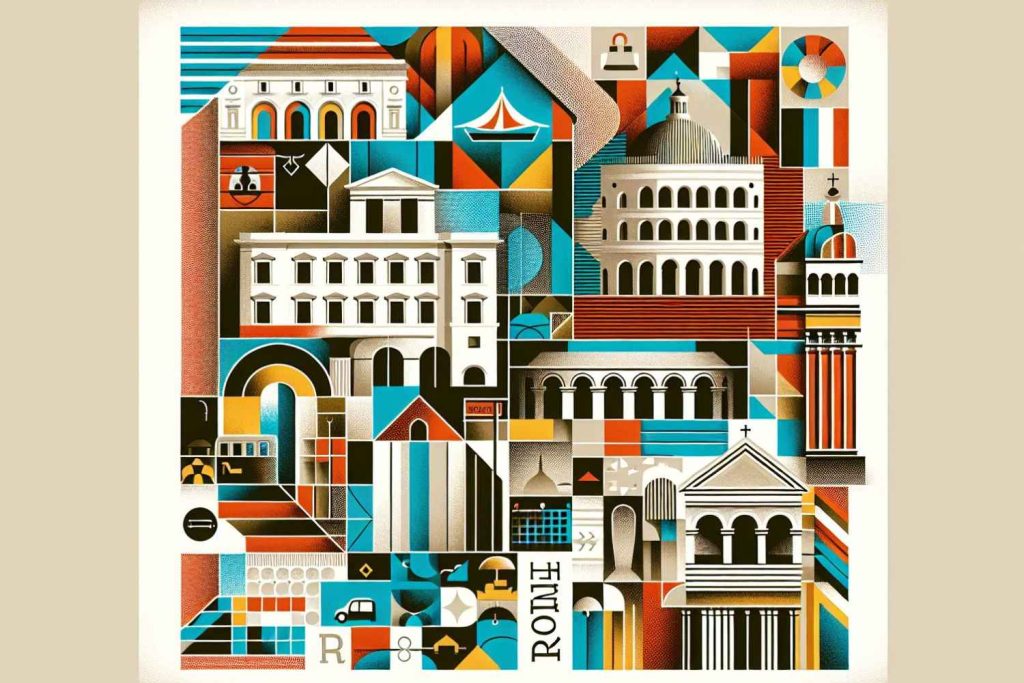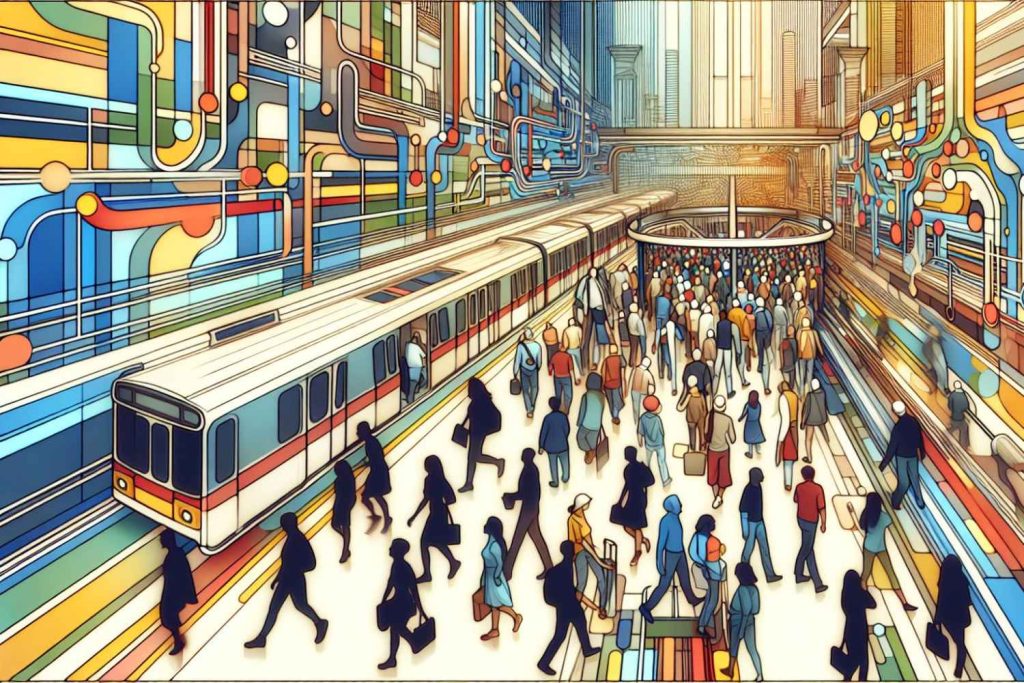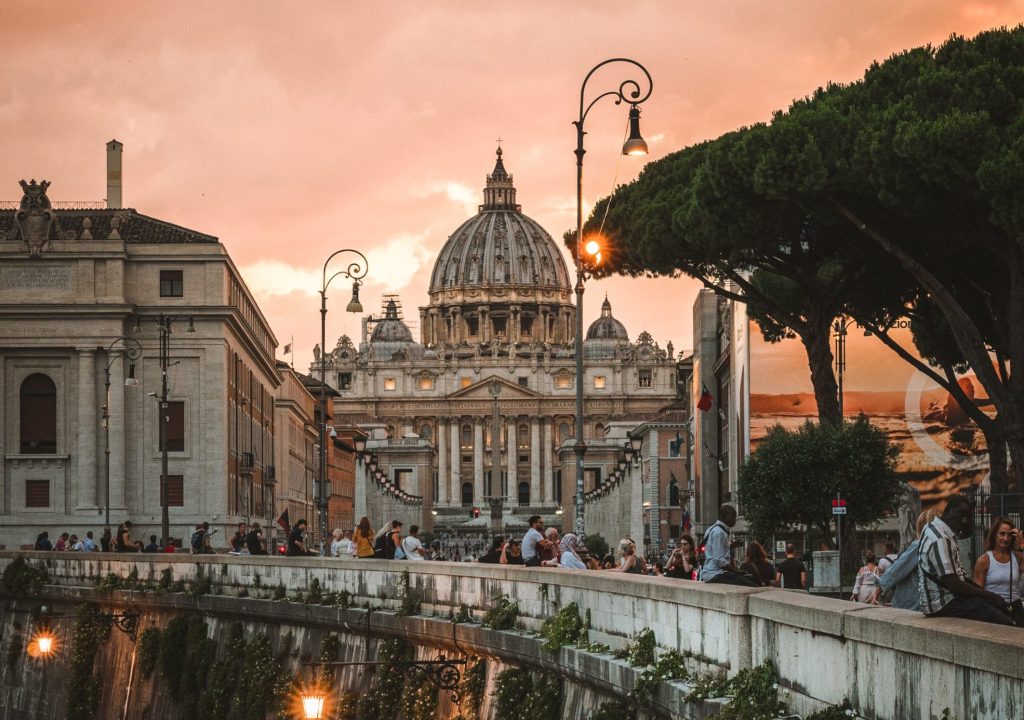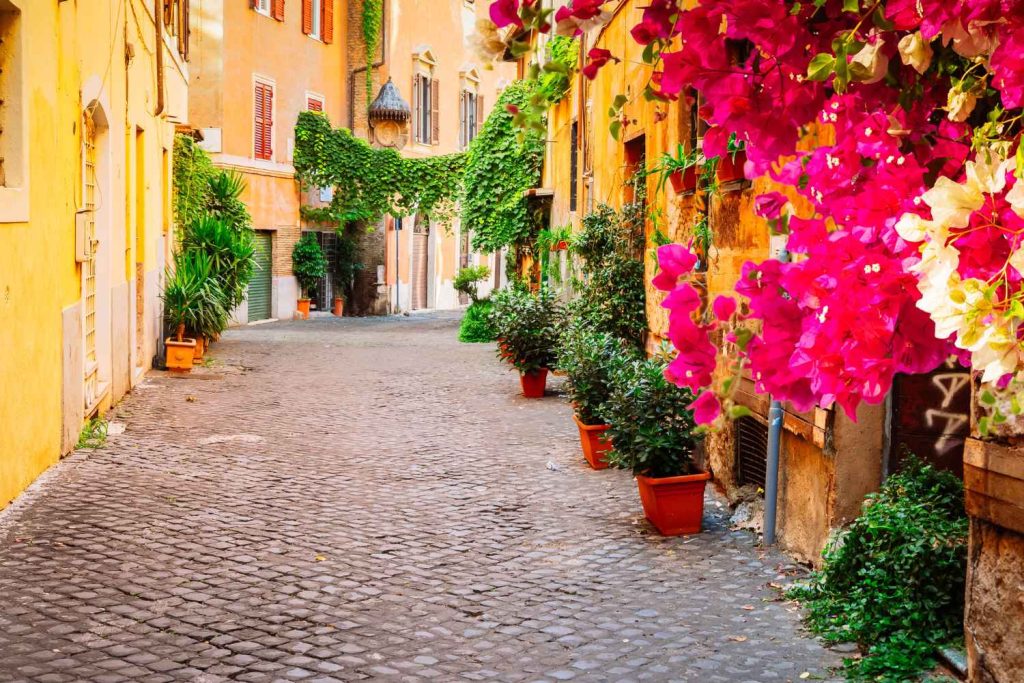The capital of Italy, is a city steeped in rich heritage and traditions in Rome that have been shaped over centuries.
Known as the Eternal City, it boasts an intriguing blend of ancient and modern influences that are deeply woven into everyday life. As a result, Rome’s vibrant cultural landscape captivates both locals and visitors alike as they experience the customs that have defined this city over time.
The Roman culture emanates from a unique mix of historical, religious, and contemporary elements that come together to form the city’s identity. From its wealth of architectural wonders and monuments showcasing Rome’s past to the enthusiasm of modern-day festivals and events in the bustling city that keep Rome’s customs alive, there is something for everyone to appreciate.
In Rome, traditional practices continue to thrive alongside contemporary lifestyles, creating an unparalleled sense of unity and engagement. Many of these customs stem from religious beliefs, which play a crucial role in shaping the culture and traditions in Rome. As a result, the city offers a rich tapestry of experiences for those looking to immerse themselves in its colourful history and cherished customs.
Historical Overview
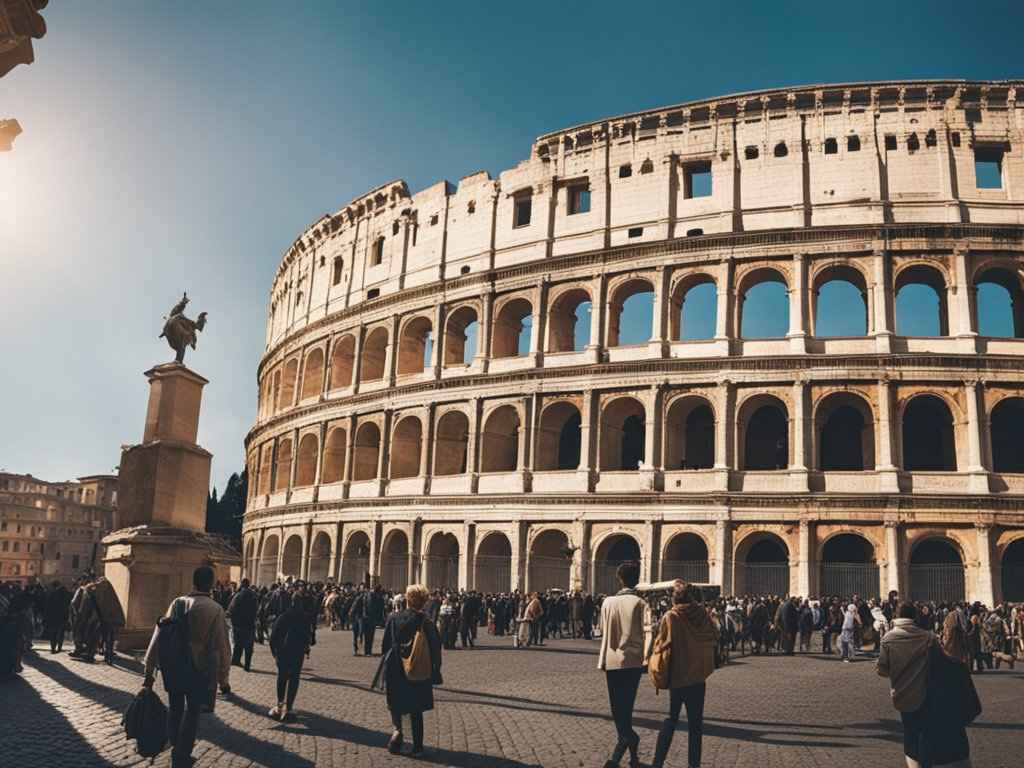
The history of Rome can be traced back to its legendary founding in 753 BC by Romulus and Remus. Rome’s development evolved from the Etruscan era to the establishment of the Roman Republic, followed by the transformation into the Roman Empire. Ancient Rome’s expansion resulted in the absorption of various cultures, most significantly Greek culture, which had a profound impact on its art, literature, and philosophy.
Throughout centuries of political growth and battles for supremacy, Rome’s iconic monuments and landmarks were constructed. The Roman Forum stands as the centre of public life, hosting both political debates and ceremonies. Another emblematic site is the Colosseum, a symbol of Rome’s grandeur and the stage for heart-stopping gladiatorial combats.
The Roman Republic was governed by a Senate, comprised of influential patricians, with roots in early Roman and Etruscan traditions. The shift from Republic to Empire began with Julius Caesar and reached its height with the reign of Augustus, who stabilised the regime through policies and a centralised administration. The Imperial era brought a series of emperors who contributed to the growth of Rome in various ways, such as the building of the Pantheon – a temple dedicated to all the Roman gods, showcasing the harmony between art and engineering.
Aside from architecture, significant social aspects of Roman life, such as leisure activities, played a vital role in strengthening the empire’s social cohesion. Rome’s extensive territories stretched from Britain and Europe to parts of Asia, including North Africa.
Nowadays, the ancient ruins scattered across Rome and its surrounding areas stand as a testament to its storied past, revealing insights into the struggles and triumphs of its emperors and citizens. These historical remnants provide visitors with an immersive experience into Rome’s glorious and ever-evolving traditions in Rome, offering a glimpse into the grand empire that profoundly shaped the world’s history.
Art and Architecture
Rome, often referred to as the Eternal City, is well-known for its rich history, enchanting art and magnificent architecture. The city boasts an array of masterpieces created by renowned artists like Michelangelo, Raphael, and Leonardo da Vinci.
One of the most prominent art galleries in Rome is the Galleria Borghese, which houses a vast collection of sculptures, paintings, and antiquities. Here, visitors can admire Bernini’s masterpieces and other notable works from Italian artists.
When it comes to architecture, the city is no stranger to majestic buildings, such as the Pantheon. This iconic temple-turned-church reflects the grandeur of ancient Rome and captivates visitors with its timeless beauty.
A key aspect of Rome’s art and architectural landscape can be found in the Vatican Museums. Featuring the Sistine Chapel, Gallery of Maps, and the hidden Borgia Apartments, they offer an immersive experience in art and history. Michelangelo’s awe-inspiring frescoes adorn the ceilings of the Sistine Chapel, a testament to his mastery and craftsmanship.
Numerous historical sites can be found throughout Rome, such as the Baths of Caracalla, the Arch of Constantine, and Santa Maria Maggiore. Each location provides unique insights into the city’s fascinating past.
Additionally, Rome’s piazzas often serve as cultural hubs, combining art, history, and daily life. One example is the Piazza Navona, a vibrant square that embodies the spirit of Rome, with noteworthy sculptures and fountains set against a backdrop of baroque architecture.
Lastly, Capitoline Hill is an important destination for art and history enthusiasts. Fusing the elements of antiquity and Renaissance, it offers a captivating mix of art, architecture, and panoramic vistas.
In summary, Rome’s vibrant art and architecture scene leaves a lasting impression, making it a truly unforgettable city for anyone with a passion for history, beauty, and creativity.
Traditions and Festivals
The Eternal City, is well-known for its rich cultural heritage and numerous traditions in Rome, with a special emphasis on fashion, Christianity, and festivals that fill the city’s streets with joy, colours, and music. One significant aspect of traditions in Rome is how they blend ancient customs with modern celebrations.
A key event within the Roman calendar is the annual Christmas festivities, starting with bustling Christmas markets offering handicrafts, decorations, and delicious treats. Rome is renowned for its nativity scenes, which are carefully displayed throughout numerous corners of the city. The Christmas season also highlights the deep-rooted connection to Christianity, with the magnificent Vatican City representing the heart of Roman Catholicism.
Another important element of traditions in Rome are carnivals, specifically the Carnival of Rome or Carnevale Di Roma. Historically celebrated since the Middle Ages, this vibrant eight-day festival permeates the entire city, culminating in Martedì Grasso or Mardi Gras, just before the period of Lent commences.
Several significant festivals commemorate the lives of saints, such as the Feast of Saints Peter and Paul – locally known as Festa dei Santi Pietro e Paolo. This event is celebrated on June 29th and is considered a national holiday in Rome. Saint Peter and Saint Paul were both crucial figures in the growth of Christianity, and during this feast, residents attend mass at the Basilica di San Pietro and the Basilica di Santa Maria Maggiore.
Ancient era also had its fair share of traditions in Rome, such as engaging in gladiatorial combat within the Colosseum and the Circus Maximus, where spectators would revel in entertainment and distraction. Although these customs have vanished, their historic importance is still clear as tourists flock to these iconic sites to marvel at their architectural grandeur.
In addition to these rich traditions in Rome, visiting the Trevi Fountain has become a popular ritual for tourists. Many throw coins into its waters, believing that doing so will ensure their return to the beautiful city of Rome.
Together, these customs, events, and sites contribute to the unique atmosphere of Rome, a city that seamlessly weaves its ancient past with its vibrant present.
Cuisine and Dining
Roman cuisine is centred around fresh, seasonal, and simply-prepared ingredients from the Roman Campagna region. Characterised by its use of meat, vegetables, and pasta, it also incorporates a variety of fried foods.
A popular marketplace to witness Rome’s food culture is the Campo De’ Fiori Market, where locals and tourists alike flock to enjoy the vibrant atmosphere and delve into the city’s culinary traditions in Rome. Another notable neighbourhood that offers a cultural and culinary odyssey is Testaccio, boasting street art, the Museum of Pasta, and a diverse range of eateries.
Roman breakfasts typically consist of simple pastries or toast, accompanied by coffee or tea. For lunch, locals often enjoy quick bites, such as pizza al taglio or suppli, a fried rice ball filled with tomato sauce and mozzarella.
Some must-try dishes in Roman cuisine include cacio e pepe, a pasta dish made with pecorino cheese and black pepper, and the renowned gelato, which is enjoyed across the city. Artichokes are also a staple in Rome, often served as part of an antipasti platter.
When it comes to wine, Roman locals have a strong preference for locally-produced varieties. Pairing cheese and wine is an essential aspect of the city’s dining culture, with wine cellars and cheese shops proudly showcasing the best of Italian produce.
Modern Life in Rome
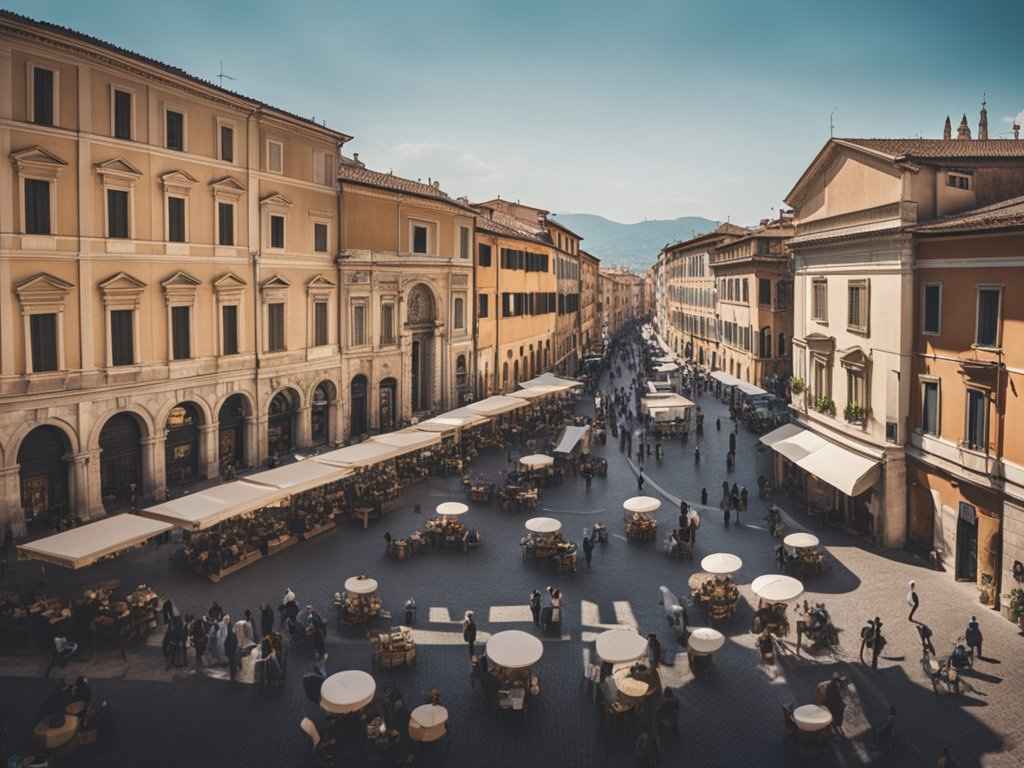
The Eternal City, blends ancient history with modern culture and traditions in Rome. With its rich arts and cultural scene, Rome is an attractive destination not only for tourists but also for those who admire its vibrant lifestyle.
The city is a melting pot of various cultures that have shaped the local language, politics, and customs. Rome’s contemporary art scene still flourishes in notable locations such as the MAXXI museum, ensuring that the city remains a hub for creativity and innovation.
Rome’s tourist attractions, such as the Villa Borghese Gardens and the Spanish Steps, are not the only aspects of the city that draw in visitors. The local markets, bustling with energy, offer a glimpse into the everyday lives of the Romans who call this city their home.
Travellers looking to explore the less touristy side of Rome can delve into areas like Trastevere, a charming neighbourhood across the Tiber River. Known for its narrow cobblestoned streets and vibrant nightlife, Trastevere offers an authentic experience of modern Roman life.
Of course, the city’s history remains ever-present in its modern culture. Take, for example, the Ponte Sant’Angelo, an iconic bridge that serves as a symbol of Roman continuity. Rome’s ancient structures and modern architectural marvels stand side-by-side, showcasing the enduring influence of its past.
In addition to its unique fusion of the old and new, Rome values family as a crucial aspect of its culture. Throughout the city, you’ll see large families gathered in parks, homes, or strolling through the picturesque Piazza Del Popolo. These strong familial bonds and vibrant public spaces contribute to Rome’s undeniable charm.
In conclusion, modern culture is a captivating blend of traditions in Rome, language, and contemporary culture that constantly evolves while remaining rooted in its rich past. As a result, the city continues to attract visitors eager to explore its lively streets and immerse themselves in its unique atmosphere.
More articles you might like...
You can find more great Rome content in the following categories;
All about Vatican City Commonly Asked Rome Questions Rome Accommodation Rome Food and Drink Rome History and Culture Rome Neighbourhoods Rome Tours and Must-See Attractions Rome's Top Tours
